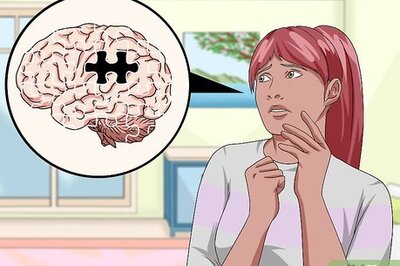
views
Thiruvananthapuram/New Delhi: While Kerala is gradually recovering from the devastating floods that wreaked havoc in July and August, the locals are forced to battle new challenges. Communicable diseases in the state have killed 84 people since the beginning of August, including 20 people in the past two days.
The Kerala government's Integrated Disease Surveillance Project (IDSP) recorded a total of 25 confirmed deaths and 39 suspected deaths in August. On September 1, the state recorded its first suspected death due to H1N1 fever — a 55-year-old man, Narayanand in Wandoor, Malappuram, who died the night before. In the past two days, the state has seen three fever deaths, 12 suspected and four confirmed cases of deaths due to leptospirosis or locally known as 'rat fever' (a bacterial disease transmitted through water of soil contaminated by animal urine).
That the state would see an increase in communicable diseases was foretold and health minister KK Shailaja, while speaking at a press conference, reiterated that floods globally had led to outbreaks of communicable diseases. She added, "We have taken preventive measures to ensure there is no outbreak of the diseases."
In August alone, the state recorded 171 cases of leptosperorsis, with 6 confirmed deaths and 34 suspected deaths — compared to just 46 cases with 6 deaths in the same month, last year. A total of 1,790 cases of chicken-pox were recorded, while 2 died — compared to zero cases in all of 2017. A total of 11 cases of H1N1 (swine flu) were recorded in August, while only 13 had been recorded in the months preceding it.
Apart from this, at least one death due to a shigella infection (intestinal disease) was confirmed at Karassery in Kozhikode, while two other cases are suspected.
But these numbers, although stark, don't convey the whole picture. Three-year-old Fatima Hanna died on August 9 and the cause of her death was confirmed as shigella, a bacterial infection that initially causes diarrhea, fever, nausea and vomiting. Her family, migrants from Bengal, had been saving to send her to school. A 10-month-old baby boy died on August 24, also due to diarrhea at Payyanakkal in Kozhikode. Doctors said that he had not been named yet.
Miraz, 26, has been suffering from diarrhea, body ache and severe vomiting. Lying on the floor at Thrissur hospital with his mother, he said, "I was moved from the local hospital to Thrissur hospital on Sunday (August 26) after my fever shot up. On the 15th, the area we lived was inundated at certain places, including where our farm was. I had two buffaloes there and I gone to check up on them."

Illustration by Mir Suhail
With cases of leptospirosis spiralling in the state, the health department is taking no chances. Dr Priya N, District Medical Officer, Idduki said, "Yes, we are expecting more cases of leptospirosis. But that said, we are fully prepared. We have been getting a lot of medicines from various agencies, including state authorities and manufacturers. We are expecting more cases, but we are also fully prepared to deal with it."
According to the World Health Organisation, while flooding is "associated with an increased risk of infection", this risk is low unless "there is significant population displacement" or contamination of water sources. Of the 14 major floods that occurred between 1970 and 1974, for instance, only one had led to a a major diarrhoeal disease outbreak - in Sudan, 1980, where there had been large scale population displacement.
Valsa, who has been suffering from fever along with her children, for the past three months offers some clues. "I reached the relief camp on August 15 and got back a few days ago. Ever since then, we have all been suffering from fever and are unwell. Everyone in my neighbourhood is also similarly sick since returning." She added that they had been provided with an assortment of medicines at the relief camp, which they were taking. But there had been no follow up and nor had a medical camp been organised.
Valsa lives in Kolumban colony in Idukki district, a tribal settlement as per the Kerala Forest Department. The district has one of the state's 16 district hospitals.
But in spite of having a doctor-patient ratio, which is above the national average, the state with a total of 18 general hospitals, 231 community health centres (CHCs) and 682 primary health centres (PHCs) has an upward struggle. The state's health and family welfare department maintained that at least 481 PHCs, 137 CHCs and 19 dispensaries were damaged during the flood.
"There were at least 10 hospitals that had been completely destroyed. Other hospitals lost equipment. The state government has opened 200 temporary hospitals to tackle the crisis at hand, but we are still just somehow keeping our heads above water, with patients coming in every day. The crisis is nowhere close to being solved," said a doctor with the National Rural Health Mission.




















Comments
0 comment